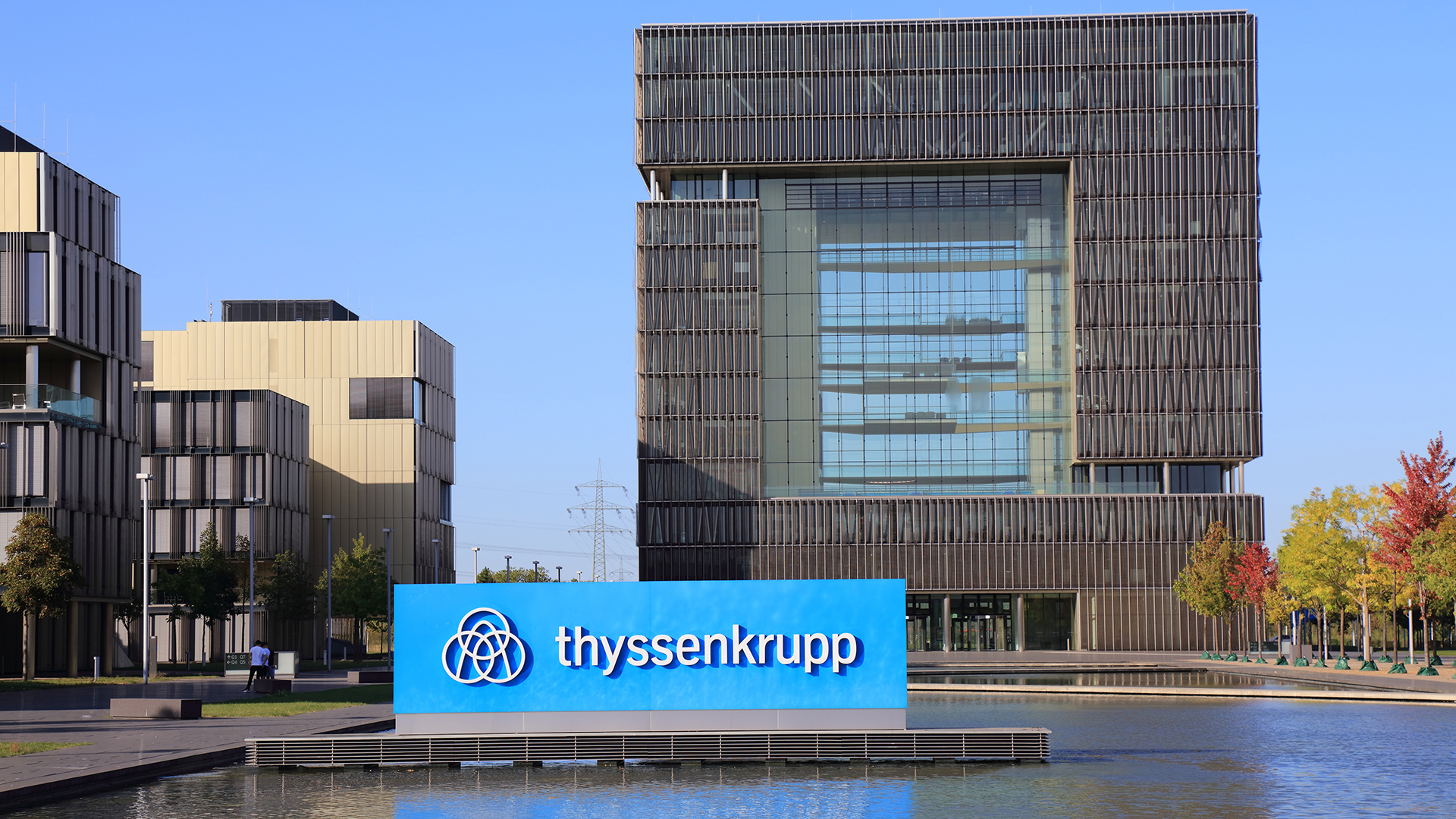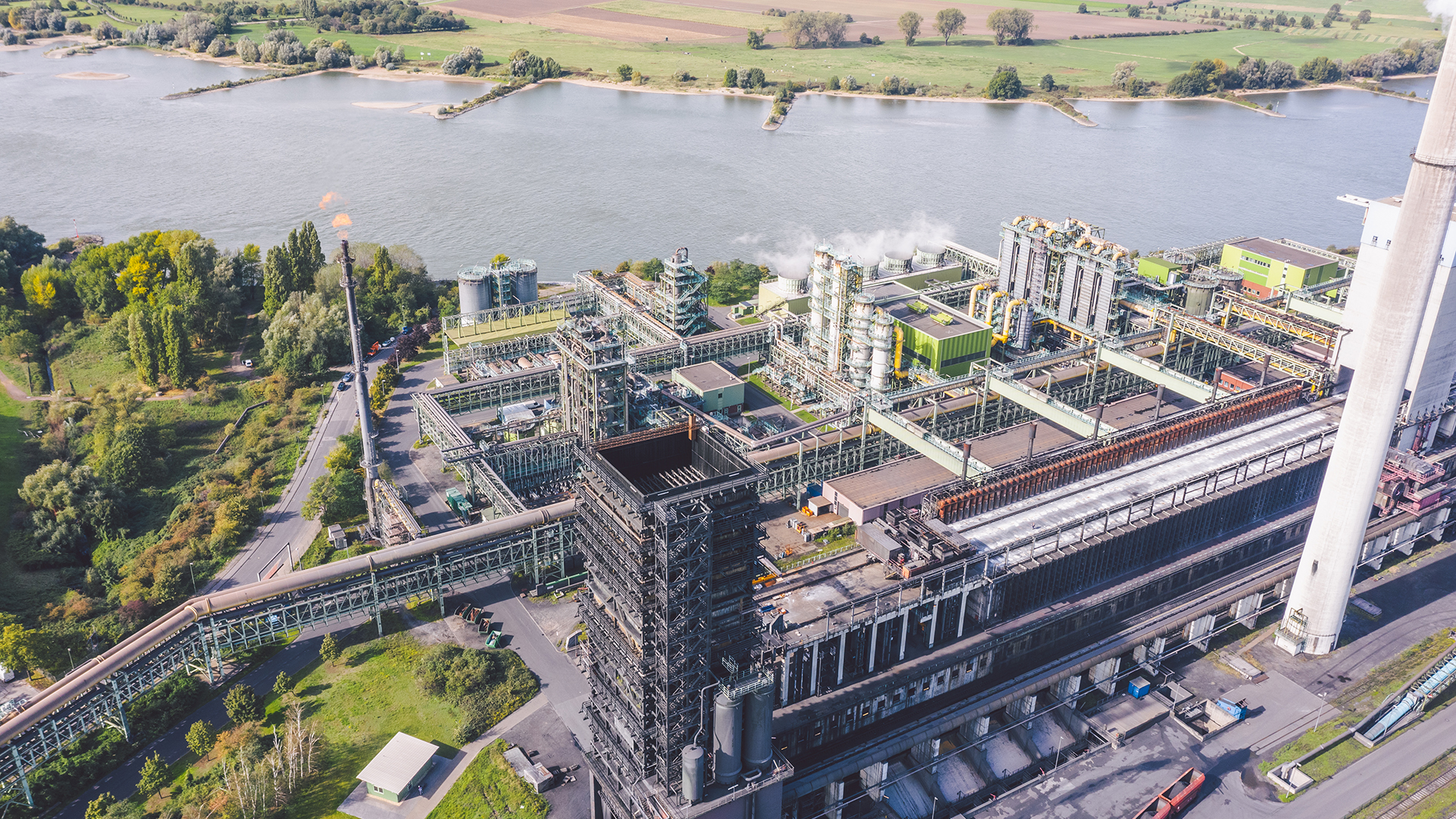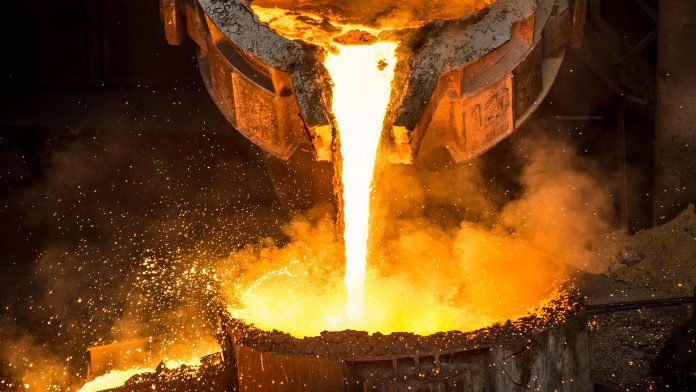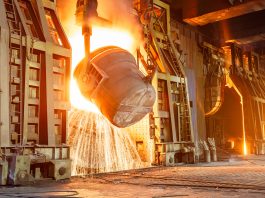thyssenkrupp has confirmed it will receive around €2bn in federal and state government funding to develop its groundbreaking German green steel plant known as tkH2Steel.
Developing the German green steel plant in Duisburg will help decarbonise the most carbon-intensive heavy industry in the world, with steel production generating 8% of total global emissions.
Visiting thyssenkrupp today, Robert Habeck, Germany’s Vice-Chancellor and Minister for Economic Affairs and Climate Action, confirmed the government’s €2bn funding commitment, with formal notification expected in the coming days.
The news arrived just a week after the European Commission approved State Aid for the tkH2Steel project.
Confirmation of German Government funding, of which the state government of North Rhine-Westphalia is providing €700m, is a significant boost to the project, with thyssenkrupp already investing around €1bn.
The German green steel plant will radically reduce emissions in the sector by replacing the use of natural gas with renewable hydrogen.

Robert Habeck commented: “Today is a good day for the climate, the green industry in Germany, for the Duisburg location, for the employees. I am delighted at being able to give thyssenKrupp definitive formal confirmation of funding, totalling around €2bn today.
“With its extremely ambitious project, the company is demonstrating that the consistent use of hydrogen can enable the decarbonisation of the steel sector, which is, after all, the biggest source of CO2 emissions in Germany.
“At the same time, we are signalling that the steel industry in Germany has a future, thus securing jobs in the long term. Our substantial funding now makes it possible for thyssenKrupp to realise this flagship project and take a decisive step on the path of transformation to green steel.”
How will tkH2Steel decarbonise steel production?
The new German green steel plant represents the first technological concept of its kind in the world.
tkH2Steel will integrate a 100% hydrogen-capable direct reduction plant within Europe’s largest iron and steel plant, making it the most ambitious decarbonisation project globally.
The green steel plant will be equipped with two melters and an annual production capacity of 2.5 million metric tons of directly reduced iron, which will make 2.3 million metric tons of hot metal.
The innovative method means that the existing process steps from the old steel mill onward can be kept in place, ensuring a robust supply of high-quality, low-carbon steel.
The tkH2Steel project will also open a range of lucrative job opportunities.
Tekin Nasikkol, Chairman of the General Works Council of thyssenkrupp Steel Europe AG, explained: “The funding is a strong and forward-looking signal for our more than 26,000 colleagues and for Duisburg as a steel production location.
“The construction of our plant complex means we will be creating more than 400 high-quality industrial jobs in sustainable technology, accompanied by the development of future-oriented training concepts.
“Together, we are now on the road to a greener, more sustainable future for generations to come.”

The project will enhance the global hydrogen economy
The direct reduction plant will reduce up to 3.5 million metric tons of CO2 annually, almost 5% of the Ruhr region’s emissions, through using renewable hydrogen.
The German green steel plant will utilise 143,000 metric tons of hydrogen per year and is scheduled to come online as early as 2029.
The amount of electricity required to produce this level of hydrogen is equal to 500 wind turbines, which will start to be commissioned at the end of 2026.
Miguel Ángel López Borrego, CEO of thyssenkrupp, noted the importance of the project to the hydrogen economy.
He concluded: “This is a great day for climate change mitigation and an important milestone for the development of a sustainable hydrogen economy in Germany.
“thyssenKrupp can contribute a great deal toward the success of the transformation: besides steel, we have technologies for the expansion of renewable energies as well as for the production and transportation of hydrogen.
“This enables us to serve key stages of future green value chains. We will make consistent use of these opportunities.”









